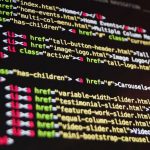This post was originally published on this site
The 2020 U.S. presidential election is less than a year away. A wide field of Democrats are vying to become their party’s nominee, and Donald Trump is running for reelection amid an escalating impeachment inquiry in Congress. Already, public attention is turning to the ability of polls to accurately measure public opinion in the race, particularly after some polls missed their mark in 2016.
The good news is that polling in the United States is not “broken,” as my colleagues recently explained in a field guide to the current state of the industry. While some individual state polls did fall short in 2016, it was not an industry-wide failure, and rigorous national-level surveys turned out to be quite accurate by historical standards. High-quality surveys, in other words, remain a trustworthy tool for measuring public opinion.
As 2020 approaches, here’s a preview of how Pew Research Center is approaching the election, both in terms of how we plan to conduct surveys and other studies and what we plan to explore:
Most of our U.S. surveys in the 2020 election cycle will be conducted online. The U.S. polling industry has undergone major changes recently, even within the past four years. Telephone response rates have continued their long-term decline, making it harder and more expensive for pollsters to reach a random sample of Americans this way. Partly in response, many pollsters have started conducting surveys online – a format that has become increasingly viable now that about 90% of
Read more here: https://www.pewresearch.org/2019/12/11/how-pew-research-center-is-approaching-the-2020-election/





